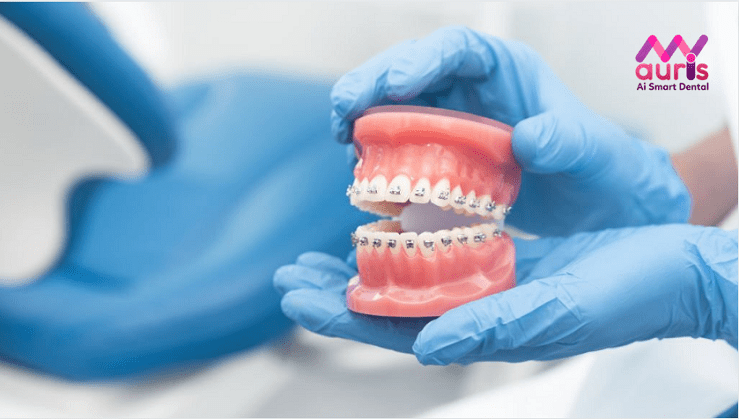How the steps in the braces process take place is the first concern of many customers in need of orthodontics. However, getting braces can make you feel uncomfortable, but the experience during the braces process is not too bad if you are well prepared. The article below will answer all the details about the braces method.
Overview of braces methods
Braces is a method used Dental instruments such as braces, archwires, fixed elastic bands or using transparent braces to help teeth move to the desired position. This method not only corrects cases of defects such as misaligned teeth, gapped teeth, etc. or complex cases such as protruding teeth, underbites, etc., helping to ensure chewing function and harmonious bite.

Braces bring outstanding advantages that orthodontic methods bring and gradually become the most popular method of teeth straightening. Besides, the braces method not only uses traditional metal or ceramic braces but also has a variety of options for customers to choose from such as: Self-ligating braces, lingual braces, transparent braces.
Steps in the process How are braces performed?
The braces process is an important factor that determines the effectiveness of braces. Braces will last from 18 to 24 months, but complicated cases can take more than 3 years.
During braces, customers have to go through many different steps. Below are the steps in the braces process:
Examination and consultation
At this stage, called pre-orthodontics, the doctor will conduct an examination and take X-rays. Then, take an impression of the jaw to check the specific condition of the teeth as well as the level of misalignment.
After getting the results of the x-ray, the doctor will rely on the results and make accurate conclusions about your specific case. At the same time, the doctor will advise on appropriate treatment methods as well as implementation time and cost.

Create a treatment plan treatment
Before starting braces, your doctor will check the health of your jaw. In cases of oral health such as tooth decay, pulpitis, gingivitis, etc., complete treatment is required. If dental diseases are not treated, the braces process will become more difficult.
Therefore, in necessary cases, the doctor may instruct you to pause the braces process to prioritize general dental treatment measures.
Progress Appliance attachment process
For braces, the doctor will prescribe appropriate appliances that need to be worn depending on the condition of the teeth. In case the jaw is narrow, the doctor will prescribe jaw expansion or wearing a jaw expansion device to prepare for the next stage of separation and banding.
Proceed to attach braces
The stage of attaching braces is the official milestone of entering the braces process. The brackets are fixed on the tooth crown, the archwire is on the bracket groove. With the purpose of creating force to align teeth according to each step of the treatment plan.
Regular re-examination
Normally, every 30 – 45 days, you need to return for regular re-examination and teeth tightening. At this time, the doctor will adjust the archwire and braces appropriately according to each stage of braces.
The period of wearing braces will last about 18 – 24 months, depending on each case, so follow-up examinations may take a long time.
Remove braces and wear retainer
After the teeth have returned to the desired position, and the bite on both sides is balanced. However, to maintain the results after braces, you will be prescribed to wear a retainer. The retainer after braces is designed with transparent plastic trays or fixed metal jaws.
Duration of wearing the retainer requires wearing the retainer for about 20 to 22 hours/day and only temporarily removing it when eating, chewing or cleaning teeth.





